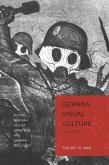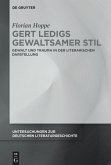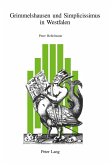At the center of this book are the World War II letters (Feldpostbriefe) of a German artist and art teacher to his wife. While Bernhard Epple's letters to his wife, Gudrun, address many of the topics usually found in war letters (food, lodging conditions, the weather, problems with the mail service, requests for favors from home), they are unusual in two respects. Each letter is lovingly decorated with a drawing and the letters make few references to the war itself. In addition to many personal communications and expressions of love for his wife and children, Epple writes about landscapes he saw as well as churches, museums and bookstores he visited. Epple's letters give testimony to how a particular German soldier who was drafted and survived the war did his best to remain a civilian in uniform; distancing himself from a reality that was not of his choosing, seeking comfort and refuge in his love for art and his ability to share this love with his wife, herself an artist. While Epple's letters are deeply personal, this book is about the human experience of war and the separation from civilian life and from family and friends.
The introduction provides a short discussion of the importance and uses of war letters as historical documents, followed by a biography of the letter writer. The letters make up the two central chapters. e drawings form an integral part of the letters; each is reproduced and accompanied by an English translation of the letter. In addition to the drawings, the text includes several photographs of the letter writer and his family.
The introduction provides a short discussion of the importance and uses of war letters as historical documents, followed by a biography of the letter writer. The letters make up the two central chapters. e drawings form an integral part of the letters; each is reproduced and accompanied by an English translation of the letter. In addition to the drawings, the text includes several photographs of the letter writer and his family.








